The beautiful church of Our Lady of Liesse is on the shore of Valletta below the Victoria Gate. In French Liesse means bliss, jubilation, and exaltation, deriving from the Latin word “Lætitia.” The joy expressed in this title of Our Lady relates to three French brothers and knights of St. John of Jerusalem freed from Saracene captivity; it also exalts the conversion of a Muslim princess to the Catholic faith, and reflects the jubilant gratitude of all those who were blessed and granted graces through the miraculous image of Our Lady of Liesse, a black Madonna statue of Levantine origin. Liesse-Notre-Dame is the name of a town in Picardie, Northern France.
The history of this devotion is fascinating, and is a fusion of strong tradition and history of the Order of St, John when they were still in the Holy Land.
Notre-Dame de Liesse arrives in Malta
Malta is still dotted with buildings and artefacts from the era of the Knights of St. John of Jerusalem, today also known as the Knights of Malta. The Order’s first years in Malta were mostly focused on strengthening and consolidating the fortifications of the Grand Harbour. Valletta was built after the miraculous victory of the Great Siege of 1565, against the Ottoman Empire, that the Knights and Maltese had experienced together.
The Knights distributed the new City according to their particular needs, for instance, they erected their castles all around it, not in a dedicated area called il Collachio. Nevertheless, the necessary buildings were planned and erected so as to have a properly structured city, and as one would expect, a fortified city of the Order of St. John. Apart from their castles, they also built several palaces, the conventual church, the hospital, and the national churches of the various languages. Through their churches, the Knights also introduced various devotions that were not known in Malta, one being that of Our Lady of Liesse.

The first church of Our Lady of Liesse was built at the beginning of the 17th century, commissioned by the French knights. They wanted to have a national church as well, as almost all the other languages had. So the French decided to introduce this devotion to Malta.
Although only one church was dedicated to this title, the several paintings and works of art reflect a substantial number of devotees. For example: paintings in the Curia and in private collections; a number of paintings depicating the happenings of the story of Our Lady of Liesse in the Dominican convent, and in the convent of the Franciscan Minor Friars, both in Valletta; and the ceiling vignnettes in the Grand Master’s Palace in Valletta. Also, in 1605, on the eve of the annual celebration of the Victory of the Great Siege, Grand Master Alof de Wignacourt presented his gioia – his gift to the Conventual church (later becoming St. John’s Co-Cathedral) of a set of vestments "made of cloth woven in gold and silver, and on the orphreys of the copes is depicted the tradition of Our Lady of Liesse."
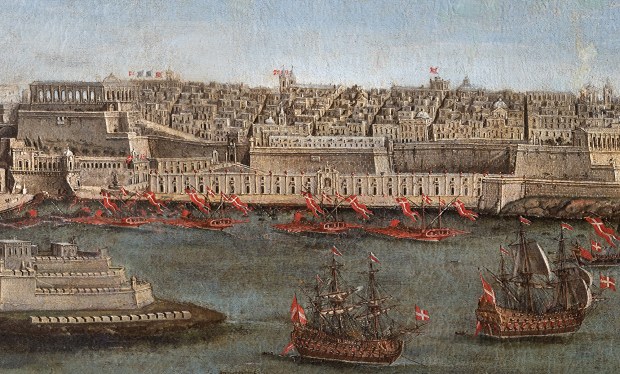
Of tradition and history
While protecting the fortress of Bersabee, near Ascalon, the three brothers and members of the noble house of Eppes in Picardie, fell in a Saracene ambush. They were considered among the best warrior monks. However, in the battle they were wounded and taken captives. After being sent to Cairo, they were given as gifts to the Caliph of Egypt. Prisoner knights were very prestigious persons to possess.
Bosio, one of the most prominent historians of the Order, recounted that the Knights’ behavior was very much in line with what the aristocracy expected of them, which made the Sultan even more appreciative of what he “possessed.” This made him fixated to convert them to the Muslim faith, which would have evidently carried great merit.
Strong tradition has it that they were sent to a failsafe prison, and that the Sultan sent the best Muslim scholars to lure them in and convert them to Islam – but all was in vain. The knights refused, in spite of promises of gold, honor, and many theological arguments.
When it occurred to him that all the attempts had failed, the Sultan considered sending Ismeria, his daughter, who was very beautiful and also knowledgeable in Islam. His idea was that if her knowledge failed, their hearts would succumb to her beauty. Her visits became more frequent, however, for the “wrong” reason -- her interest in the Blessed Virgin Mary flourished. From the knights she learned about the Christian God and Our Lady, which prompted her desire to embrace Christianity: So much so that the Princess asked the knights for an image of Notre Dame, but this was a problem, as they had none to offer! The tradition says that the Princess gave the three knights a chunk of wood, as well as tools, to make a sculpture of the Madonna.
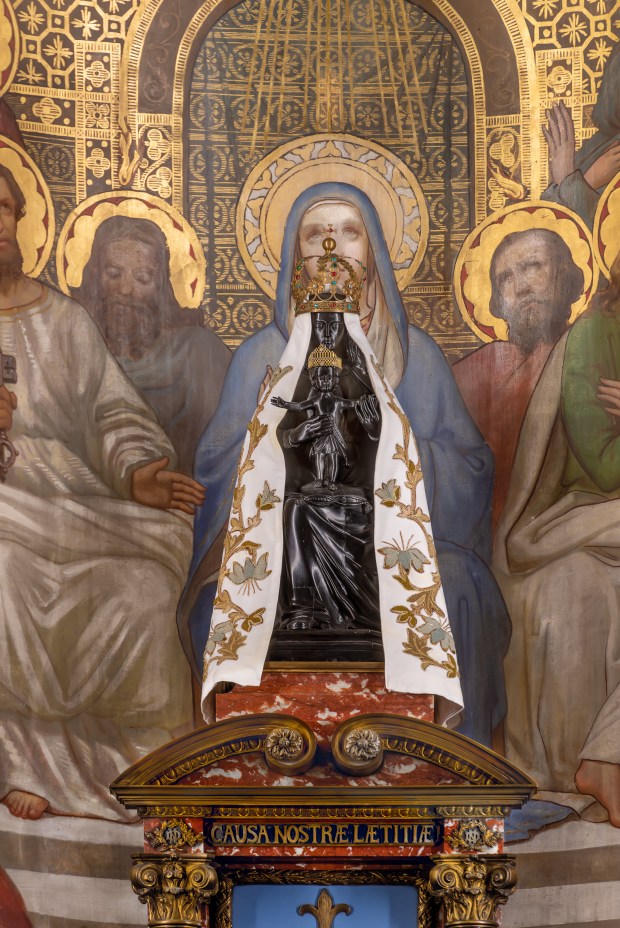
Since the knights had no sculpting skills whatsoever, they spent the time praying, and there, during the night, while they where sleeping, an angel visited their cell and transformed the wood into a beautiful image of the Blessed Virgin Mary. Another version of this tradition says that Our Lady sent Ismeria the statue by an angel, the statue of Our Lady of Liesse. Ismeria found the small effigy near her bed when she woke up in the morning. Whichever version is correct, Ismeria’s resolve to convert was strengthened when she saw the miraculous and resplendent image of Mary.
The Sultan’s daughter helped the knights to escape, and actualy fled with them. Of course, she did not leave her beloved statue behind. Apart from her conversion to Christianity, she also took off because if she stayed her father would have killed her for helping them.
The journey was long and perilous, in fact, at certain point, Ismeria was so exhausted that she had to rest. All four fell asleep, and again, grace poured down from heaven -- the group woke up in another place. They were in Picardie, close to the Eppes villa. They knelt down and humbly thanked the Virgin Mary. While passing through a garden the miraculous statue of of the Levantine Madonna became so heavy that it could not be moved: It was clear, the Virgin wanted a church to be built there, and indeed it was! A beautiful church to receive Our Lady of Liesse was erected (12th century). Ismeria was baptized in the magnificent Cathedral of Notre-Dame de Laon, and was christened Mary.
This devotion became very prominent and popular among the Knights of the Order of St. John of Jerusalem, especially those of the French language. Our Lady of Liesse was introduced in the Maltese islands shortly after the Knights’ arrival in 1530.
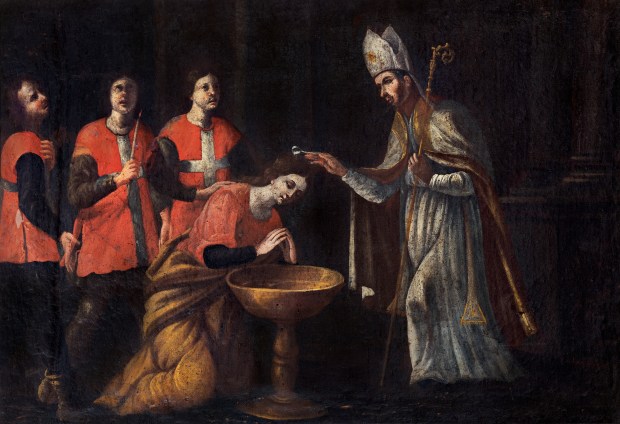
At a time when new bridges need to be built between East and West, between Muslims and Christians, the figure of Ismeria is a symbol of unity. The Muslim princess is a reminder of Our Lady’s prominent presence in the Qur’an.
The Malta church
The first church dedicated to Our Lady of Joy was built in 1620, and the principal benefactor was the Ballius of Armenia, Seneschal Fra Giacomo de Chenu de Bellay. The first stone was blessed in November of that year. Grandmaster Alof de Wignacourt, together with the members of the Order and the clergy and the Prior of the Conventual Church of St. John the Baptist, took part in the pontifical ceremony that was held on the site where the church was to be built.
In 1740 the church was rebuilt – the one standing today. This church has a beautiful round shape with a number of pillars decorating it, from Ionic to Corinthian. A cornice, rising above the frieze, marks the origin of the church’s beautiful dome. The very original windows add to its architectural beauty.
Brother of St. John De La Salle
In the sacristy there are two inscriptions worth mentioning. One says that Fra Enrico De La Salle, brother of St. John the Baptist De La Salle, as executor of Fra Giocomo de Bellay, who had built the first church, established a foundation so that every Wednesday the Franciscans of St. Mary of Jesus (Ta’ Gieżu), of the Valletta convent, celebrate Holy Mass on the altar of Our Lady of Liesse.
The other inscription (dating 1667) says that the same monks are bound to chant the Salve Regina, the litany of Our Lady and the Ave Maria every Saturday in this church. These intentions are no longer celebrated in this church, but the Fransciscans still fulfill them at their convent.
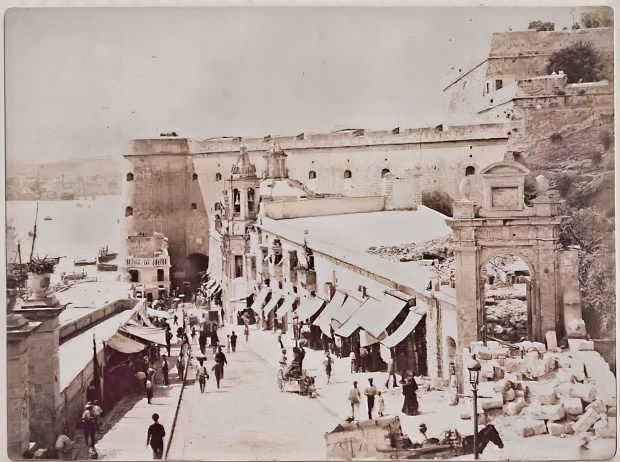
In the church one can admire the old stone statue of Our Lady of Liesse in a small niche, with an altar in front of it. It is traditionally held to be a copy of the original one found in the sanctuary in Picardie. This statue is of certain importance, since it is somewhat a copy of a now lost original, venerated for centuries at Liesse-Notre-Dame, but destroyed during the French revolution. This beautiful terracotta statue shows the Madonna with the Infant Jesus on her lap. The French Knights brought it with them to Malta from Rhodes in 1530.
The altarpiece is the work of Enrico Arnaux, a prominent artist in the Maltese Islands in the 18th century. It depicts the moment when the angel appears with the statue of the Madonna, while the three knights were asleep, and the Blessed Virgin and Child Jesus, surrouned by angels, are overlooking this moment. Above the painting a sculpture of the Holy Spirit within an inscription saying "You are the joy of Israel" stands out.
The altar on the right is dedicated to St. Mauro Abbott, who was a Benedictine monk from Messina. The altarpiece is said to be the work of the well-known artist Cassarino. The other altar is dedicated to St. Louis IX, King of France. The altar houses the holy body of St. Generoso, brought over from Rome. Apart from the altarpieces, this church houses other magnificent works of art, for instance, a painting of the Immaculate Conception and another illustrating St. Anthony of Padua together with St. John the Baptist. A marble plaque close to the main altar commemorates Vicomte De Beaujolois, who was the brother of King Louis Philippe of France. De Beaujolois died in Malta in 1808 and was buried in St. John’s Co-Cathedral, but according to his wish, his heart was buried in this church.
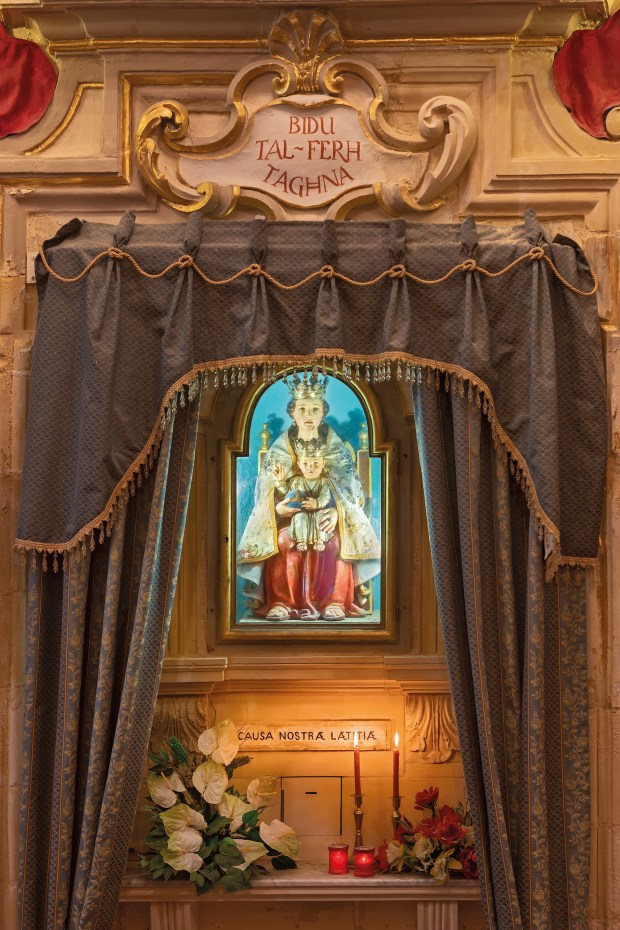
A painting of St. John de la Salle was made in 1959 to commemorate the centenary of the saint's canonization -- Our Lady of Liesse is the Patron of the Brothers of St. John the Baptist de la Salle. The connection between this church and the De la Salle family is also noteworthy. The origin of this connection goes back to the benefactor who covered the expenses to build the church, since this benefactor appointed as executor Fra Enrico de la Salle, a member of the Order. The fact that De la Salle Religious Orders’ patron is the Notre-Dame de Liesse, strenghtens this connection; indeed, in the church one also finds another marble plaque commemorating an anniversary of this Religious Order in Malta. I myself (the undersigned) am a Lasallian as I got my primary and secondary education at De la Salle College, one of the schools in Malta founded by the Brothers of St. John the Baptist de la Salle.
The church also has a recently-made processsional statue, sculpted by the statuary Albert Micallef, from Bormla. The effigy was blessed in 1981 by the rector, Fr. Raymond Fenech Gonzi OFM, and after was taken processionally from the church of Ta’ Giezu to the Church of Liesse, accompanied by the Stella Maris Band of Sliema. A few years ago the church underwent restoration and conservation works, giving it back its original glory. The Maltese planning authority has scheduled this church as a First Grade National Monument.
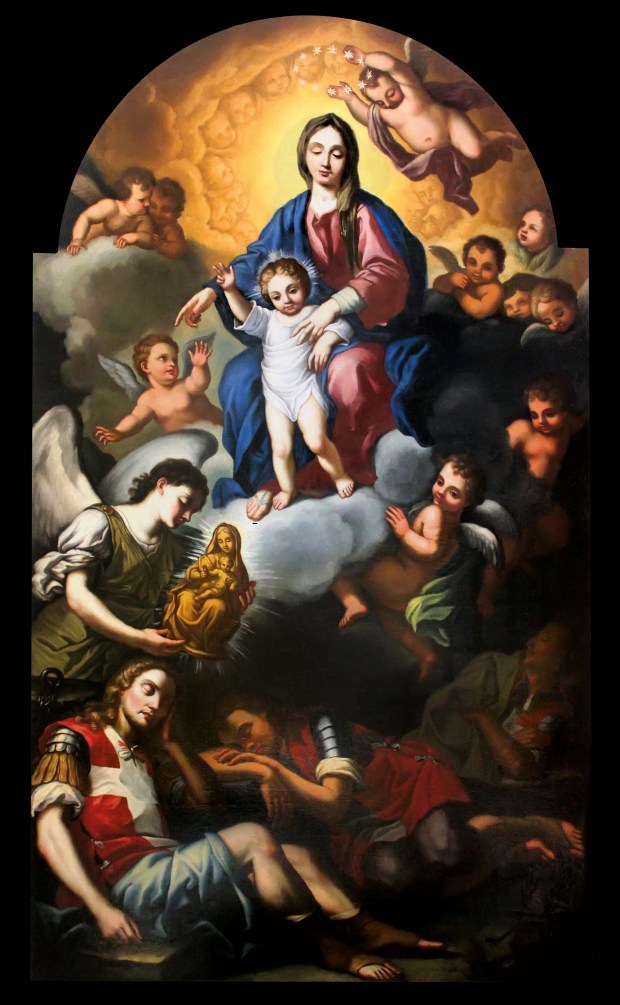
The Apostleship of the Sea
In 1961, this church became the seat of the Apostolatus Maris – the Apostleship of the Sea (in Maltese, Apostolat tal-Baħar), an association that cares for the spiritual needs of sailors. The Apostleship was established in 1944, the founder being Fr. Giuseppe Scalpello OFM, a Franciscan of St. Mary of Jesus Convent in Valletta (Ta’ Giezu). Fr. Giuseppe was the chaplain of the port as well as the rector of this church. Fifteen years ago the Archbishop of Malta, at the time H.E. Mgr. Giuseppi Mercieca, appointed Mgr. Joseph Borg as chaplain of the Apostolatus, and he still holds this position.
The members of the Apostleship still go on board ships to visit seafarers, but pastoral work has diminished, since ship companies are using fewer and bigger ships. Also, port charges increased, so ships stay in the ports for much shorter times. In 2016 the house adjoining the church was converted into a Seafarer Center, where seafarers with medical and other problems stay until the particular situation is resolved. Lodging and food are provided for free. Apart from their local work, from time to time, the chaplains of maritime apostolate associations meet in international congresses, such as the one held in 2006 in Poland. which representatives from the Vatican also attended.
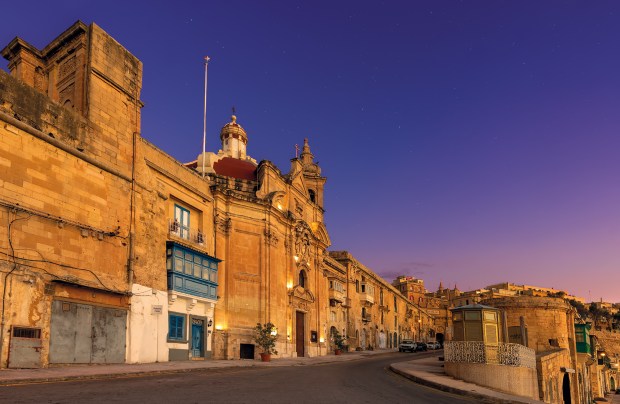
Masses and the feast
During the time of the Knights, the feast of Our Lady of Liesse was celebrated on the Saturday preceding the second Sunday of May. Until recently, the feast of Our Lady of Liesse was quite prominent, but today it is not celebrated with the fervor it used to be. During the COVID-19 period, churches were closed and religious feasts were canceled (as were many other events and activities). Our Lady of Liesse’s church was no different. Actually, because of this and other reasons too, from that time onwards the zeal and intensity of the festa has not reached pre-COVID levels. However, it is still well organized, and at the same time it gives an opportunity to many to know more about this treasure in Valletta.
Holy Masses are celebrated on Saturdays at 5:30 p.m. and Sundays at 9:00 a.m. For more information about the church, kindly contact the rector, Mgr. Joseph Vella at revjosephvella@gmail.com
Acknowledgments
I would like to convey my heartfelt thanks to Mgr. Joseph Vella, rector of Our Lady of Liesse Church; Judge Emeritus Prof. Giovanni Bonello, general editor of Ta’ Liesse, Malta’s Waterfront Shrine for Mariners; and Mr. John Sullivan and Mr. Daniel Cilia, coordinator and designer/photographer of the same book, respectively, for assisting me to compile this article, with uncommon patience and kindness.
References
Bonello G. et al. Ta’ Liesse – Malta’s Waterfront Shrine for Mariners. Miller Distributors 2020
Fiaccola G. The Church of Our Lady of Liesse and its legend. The Times of Malta, 14th September 2014
Roten J. G. Our Lady of Liesse. University of Dayton Blogs, 8th March 2016 [accessed 1st – 8th and May 2024]
Zammit V. Il-Knisja tal-Madonna ta’ Liesse – Valletta. Kappelli Maltin [accessed 1st – 8th and May 2024]

